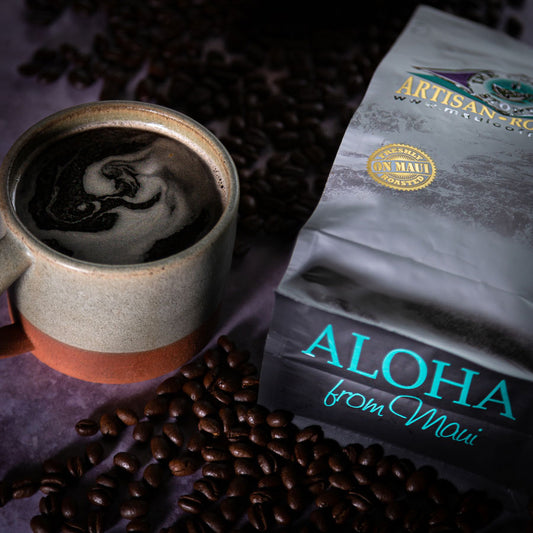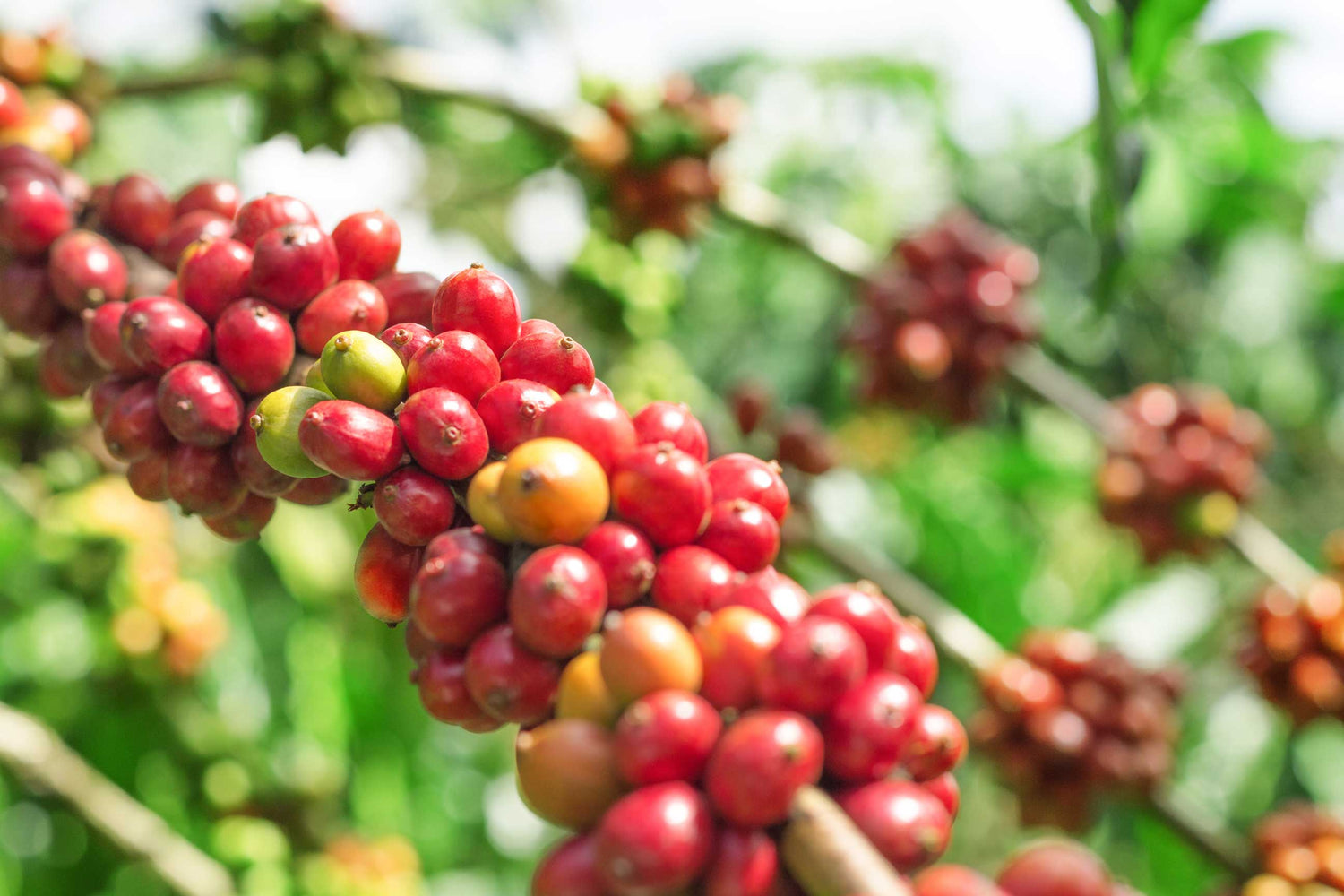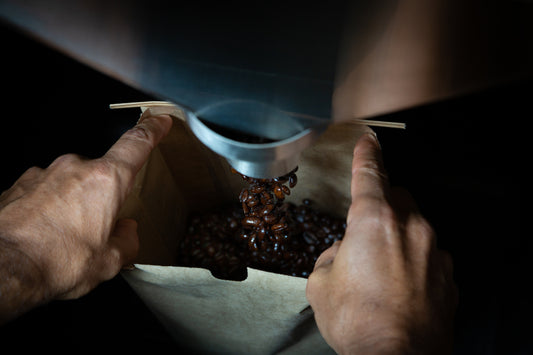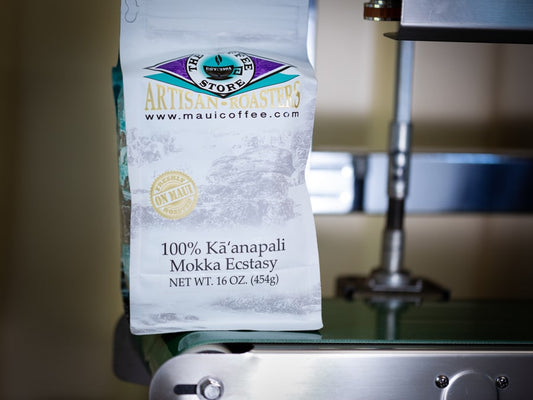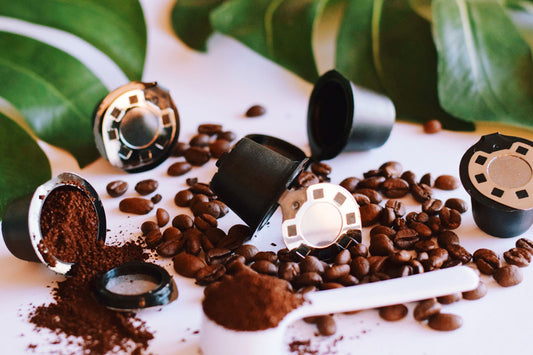The quest for the best coffee
The quest for excellent coffee might take you down many different roads. Some are weird, like plucking coffee beans from the poop of Indonesian civets. Some are wonderful, like Fair Trade and farm-to-cup sourcing.
Today, we're going to discuss peaberry coffee. Prized by many and pooh-poohed by others, peaberry coffee beans are both popular and controversial among coffee connoisseurs. So what is a peaberry and why should coffee-lovers care?
It all begins inside the coffee cherry
Most of the time, coffee cherries grow with two seeds inside. As these seeds grow, they fill out much of the inside of the cherry. By the time they are mature, they are nestled tightly together, each comprising half of a roughly-spherical mass at the core of the fruit. The way they nestle together explains the flat facet that each seed develops.
These seeds, while not 'beans' in any botanical sense, are of course coffee beans. Having grown two-per-cherry, they are known as 'flatbean' or regular beans and they have the characteristic shape that coffee beans possess.
How peaberry coffee grows differently
Sometimes, only one seed develops within the cherry. Reports vary, but this seems to happen 2-5% of the time. No one knows why, but this happens in all varietals in all growing regions irrespective of the conditions. Unlike their flatbean counterparts, these singletons develop a rounder oblong shape and are known as peaberries.
Processing the coffee
You can't tell by looking whether a coffee cherry contains one bean or two, so there's no way to sort out the peaberry beans until after the coffee has been processed. Two common processing methods are the 'washed' or wet process and the 'natural' or dry process.
Washed processing involves removing the fruit or 'pulping', fermenting and drying the 'parchment coffee' (that's the seed in its papery hull), and hulling the coffee to remove the parchment layer.
Natural processing involves letting the fermentation happen inside the dried fruit. In this method, the hulling removes the dried fruit and the parchment layer in one step. The end result is green coffee, invariably containing a small percentage of peaberries.

Sorting peaberry coffee
Farmers and coffee mills have developed many ingenious methods to sort out the peaberry coffee. The most sophisticated setups take advantage of the fact that rounder peaberries roll while flatbeans do not.
Sloped tables rigged with pneumatic vibration and gradations of sized screens are remarkably efficient at sorting out the peaberry beans. It's never 100% perfect - don't be surprised if you find a few stray flatbeans in your bag of peaberry coffee - but it's quite good.
Roasting peaberry coffee
Peaberry coffee is a bit different to roast, and most roasters love working with it. With their oblong shape, peaberries tumble more freely in a roaster's spinning drum. They don't have any flat facets to scorch against the metal surface of the drum, nor do they have any narrow edges that heat unevenly. Peaberries are measurably denser than flatbeans, allowing for roast profiles that are well-developed even at lighter degrees.
Peaberry in the cup
It's important to remember that peaberry coffee does not come from a particular varietal or a particular origin. Each and every coffee harvest will have a small percentage of peaberries in it.
As such, the range of flavors you can get from peaberry coffee is as vast as that of all coffees worldwide. Peaberry coffee and flatbean coffee from the same harvest will have similar cup characteristics, but the peaberry is widely believed to have something extra...
So is peaberry better?
There are skeptics who disagree, but aficionados swear that peaberry coffee is in fact better than flatbean coffee from the same harvest. Some find the flavors more complex and sweeter. They credit the nutrients that a peaberry receives with no competition inside the cherry. Some find the cup to be more 'balanced' or 'brighter'.
This may be due to the advantages of roasting a denser, rounder bean. Whatever the reason, peaberry coffee has very passionate fans. Who wouldn't want a little extra sparkle in their morning cup?
Even flatbean coffee is better thanks to sorting the peaberries
Ironically, peaberries were historically considered to be defective and, if they were sorted out at all, they were discarded. The fact that the few percent of beans that were peaberries developed differently during roasting made for less consistent roasts.
The coffee world hadn't yet learned to prize peaberry coffee. Nowadays, anyone who bothers to sort out the peaberries keeps them as their top-shelf offering.
As a result, the flatbean coffee remaining is better, too. An all-flatbean roast is more consistent without the peaberries mixed in. Plus, the sorting process removes other broken and defective beans as well.
Peaberry coffees around the world
Certain growing regions are known for offering excellent peaberry coffee, enhancing the characteristic flavor associated with the origin. Tanzanian Peaberry has an even more syrupy sweet berry taste than its flatbean counterpart. Papua New Guinea Peaberry has an amazing depth to its earthy, herbal notes. And the coffees of Hawai'i boast some of the finest peaberries on earth.

Kona Peaberry
Kona coffee from Hawai'i's Big Island is among the world's most prized, and Kona Peaberry is absolutely iconic. Lovers of Kona coffee can instantly recognize the sweet, nutty flavor, the buttery mouthfeel, and the indulgent aroma of Kona coffee. Kona Peaberry has all that and more, with a brightness that highlights the complexity and body of this world-class cup of coffee. At The Coffee Store, we get our 100% Kona Peaberry straight from trusted neighbor-island farmers and it remains one of our all-time most popular offerings.
Peaberry from Maui
Maui coffee is known for its fruit-and-chocolate cup character, outstanding aroma, and mild finish. Our 100% Ka'anapali Peaberry has sweetness, body, and depth of flavor that sets it apart and makes it our #1 most popular coffee year after year.
The Mokka varietal is grown on Maui and is one of the richest, most flavorful coffees anywhere. Our 100% Ka'anapali Mokka Peaberry positively sparkles. It's bright and bursting with a riot of flavors including hazelnut and cocoa. Only a few bags are produced each year, so we always run out between harvests.
Premium peaberry... at a premium
Peaberry costs a bit more than flatbean coffee for reasons that come down to supply and demand. On the supply side, peaberry coffee is rare and it costs extra to produce. Industrial-scale coffee mills invest a lot of capital in sorting technology, while small-scale farmers invest long hours screening their precious green coffee.
On the demand side, peaberry coffee is more popular than ever. It's not surprising that consumers would rather spend a bit more on a bag of excellent coffee rather than pay a chain coffee shop a huge markup for something mediocre. Remember, you save money and improve quality by brewing excellent coffee yourself, even if the price per pound is higher!
You be the judge
The difference between flatbean and peaberry coffee will be debated for as long as coffee is harvested. Ultimately, all that matters is how much enjoyment you get from your coffee. When it's time to re-up your supply, try something special. There's never been a better time to be a coffee drinker!


